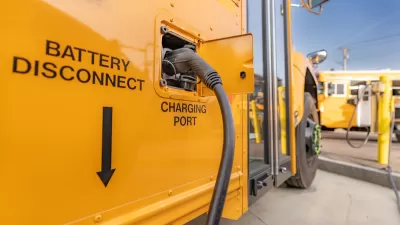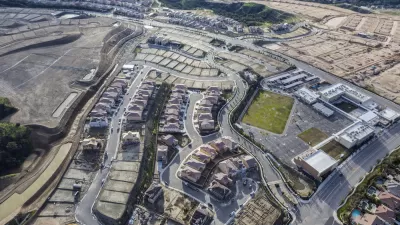With the national spotlight rightfully focused on the irreversible effects of lead in the drinking water of Flint, Michigan, another insidious threat remains: motor vehicle emissions affecting children's lungs.
Six million children attending 17,000 schools "fail" the proper siting test, potentially exposing the developing lungs of children to the damaging emissions from motor vehicles.
Ruth Etzel, MD. writes about a new "best practices" document released by the U.S. Environmental Protection Agency, with collaboration from the South Coast Air Quality Management District and the Southern California Clean, Green, and Healthy Schools (a state-sponsored, pilot project partnership) for the preferred placement of schools and implementation of strategies to reduce air pollution at schools.
Proximity to exposure from motor vehicle emissions is a key consideration for protecting children from the damaging effects of air pollution that include "asthma, reduced lung function, and impaired lung development."
[A 2007] study by researchers at the University of Southern California [USC] found that children who live within 500 meters (that’s about one-third of a mile) from a freeway incur substantial and long-lasting deficits in lung development and function compared to children living at least 1500 meters (a little under 1 mile) from a freeway.
So, how many schools "fail" the siting test? "(N)early 17,000 of our country’s schools are located within steps of a heavily-traveled road, potentially exposing more than 6 million children to traffic-related pollution at a time when their developing lungs are particularly vulnerable to the harmful effects of air pollution," writes Etzel.
What’s more, low-income and minority children are disproportionately impacted by asthma and are more likely to live and attend school near major roadways.
It's not just a matter of where to place schools. Other strategies can be considered to mitigate the effects of vehicular emissions, of particular importance to "schools [already] located downwind from heavily traveled roadways (such as highways), along corridors with significant trucking traffic, or near other traffic or vehicular pollution sources."
This publication [22-page PDF] can help school communities identify strategies for reducing traffic-related pollution exposure at schools [...]. Many of these strategies are already being used by schools across the country to reduce exposures to traffic-related air pollution.
According to Etzel, these strategies can include "ventilation, filtration, school transportation policies, and the use of sound walls and vegetative barriers."
The payoffs of cleaner air resulting in stronger lungs of children was reported last March in a Planetizen post, "'Good News' Air Pollution Study," also written by USC, "one of the largest and most detailed studies of the long-term effects of air pollution on the respiratory health of children."
The pollution reductions were largely due to regulations on the federal level by the Environmental Protection Agency (EPA), state level by the California Air Resources Board (CARB) and on the regional level by the South Coast Air Quality Management District
Hat tip: Becky English, Sierra Club California
FULL STORY: Cars and Trucks and Things That Go…Put the Brakes on Traffic-Related Pollution Exposure at Schools

Study: Maui’s Plan to Convert Vacation Rentals to Long-Term Housing Could Cause Nearly $1 Billion Economic Loss
The plan would reduce visitor accommodation by 25,% resulting in 1,900 jobs lost.

Alabama: Trump Terminates Settlements for Black Communities Harmed By Raw Sewage
Trump deemed the landmark civil rights agreement “illegal DEI and environmental justice policy.”

North Texas Transit Leaders Tout Benefits of TOD for Growing Region
At a summit focused on transit-oriented development, policymakers discussed how North Texas’ expanded light rail system can serve as a tool for economic growth.

San Diego County Sees a Rise in Urban Coyotes
San Diego County experiences a rise in urban coyotes, as sightings become prevalent throughout its urban neighbourhoods and surrounding areas.

Los Angeles County Invests in Wildfire Recovery for Parks, Trails, and Open Space
The $4.25 million RESTORE Program supports the recovery of parks, trails, and open spaces damaged by the January 2025 wildfires through targeted grants that promote community healing, wildfire resilience, and equitable access to nature.

Nevada Bills Aim to Establish Home Insurance Assurance Amidst Wildfire Risk
Republican sponsor hopes the FAIR plan would be “a true market of last resort.”
Urban Design for Planners 1: Software Tools
This six-course series explores essential urban design concepts using open source software and equips planners with the tools they need to participate fully in the urban design process.
Planning for Universal Design
Learn the tools for implementing Universal Design in planning regulations.
Alamo Area Metropolitan Planning Organization
City of Santa Clarita
Institute for Housing and Urban Development Studies (IHS)
City of Grandview
Harvard GSD Executive Education
Toledo-Lucas County Plan Commissions
Salt Lake City
NYU Wagner Graduate School of Public Service




























